Your cart is currently empty!
Month: January 2015
-
Just Ask

Some of the chickens, Lucky especially, aren’t as shy as I am. If she wants something, she doesn’t hesitate to ask. This afternoon, she wanted her supper hand carried to her. After raising a clutch of well adjusted chicks this fall, she deserves special treatment.
Each chicken’s comb is as unique as a fingerprint. If you look at Lucky’s comb, you’ll see one tooth with two points that sticks out further than the others. There is an infinite variety of combs. Some have many teeth, others just a few. Some flop to the left, some to the right, some are rigid, some are short, and some are flat. There are combs with very deep valleys, tall ones, and short ones. One of the easiest ways to tell chickens apart, is by their combs. When the chickens are in tall grass, and all you can see are their combs, you can still tell who they are by their combs.
Another way to tell them apart is by their voice. Chickens’ voices are as distinct as human voices. Did you know that?
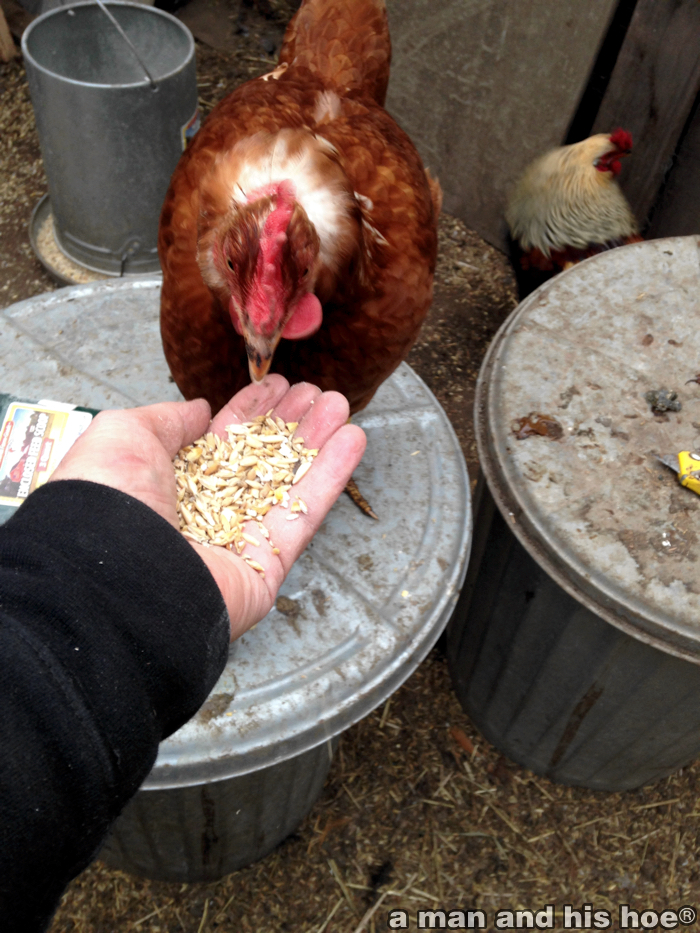
-
More Signs of Spring

With the unseasonably warm weather and increasing length of the days, it’s impossible to step outside and not see new signs of spring each day. Daffodils are popping up and sweet daphne buds are bulging. It feels more like mid-February than January.

It’s a contrast from past Januaries, like January 2007 and 2012. The chickens don’t care much for the snow. They will put up with it, but the boys dream about days when the snow falls thick and fluffy. The deeper the snow, the more fun they have.
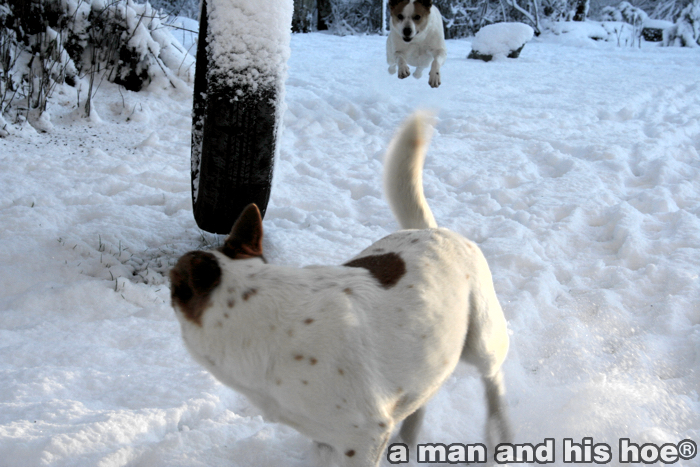

-
The Law of Beauty
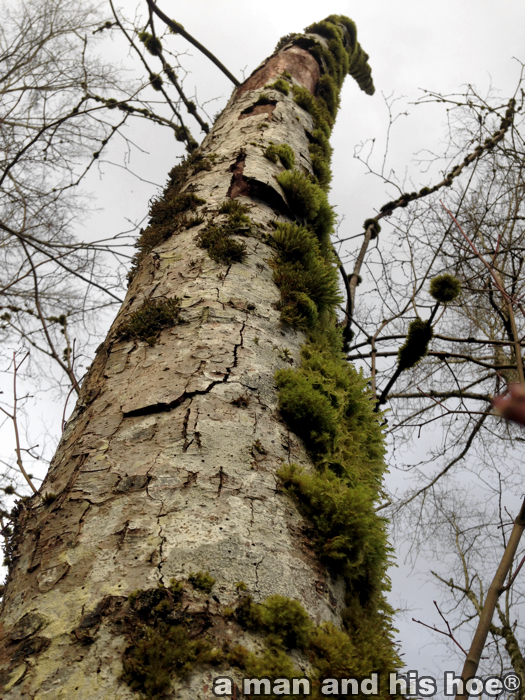
Deep in the woods, an alder has died. The mushrooms and mosses and ferns have moved in and are devouring it. But, even as they slowly turn the tree into dirt, they assiduously follow the law of beauty, one of nature’s preeminent principals. There’s Amalie Noether’s theorem, a fundamental tool of modern theoretical physics and the calculus of variations, which states that any differentiable symmetry of the action of a physical system has a corresponding conservation law. There are Newton’s laws of motion. There are the Einstein field equations, which describe the curvature of space-time due to mass-energy equivalent to the gravitational field. And on and on and on.
Then there is the law of beauty, Nature’s dictum that whatever must be done must be done with beauty. The mosses and mushrooms and ferns flagrant display of beauty, as they perform the mundane task of dismembering the dead alder, illustrates this fundamental law of Nature. You could say that Nature has an addiction to beauty. The capitalists and industrialists and hedge fund managers which rule us are doing their utmost to make sure we never see this beauty. They are working feverishly to wipe out as much of nature’s beauty as possible. They’ve even gone so far as to turn on as many lights as possible at night, so that we can’t see the glorious stars and planets and milky way and other galaxies when the sun sets. Their insidiousness knows no bounds.
All it takes is an alder dying in the woods to take heart that in some places at least, Nature’s law of beauty still prevails.
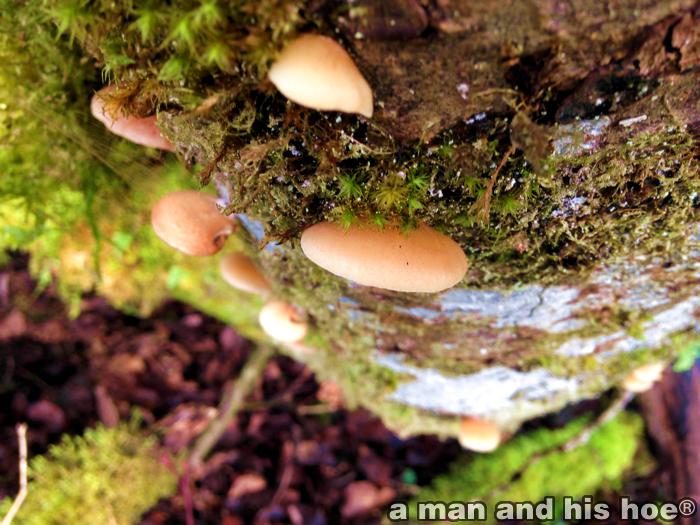


-
The Delicious Warmth of Eggs
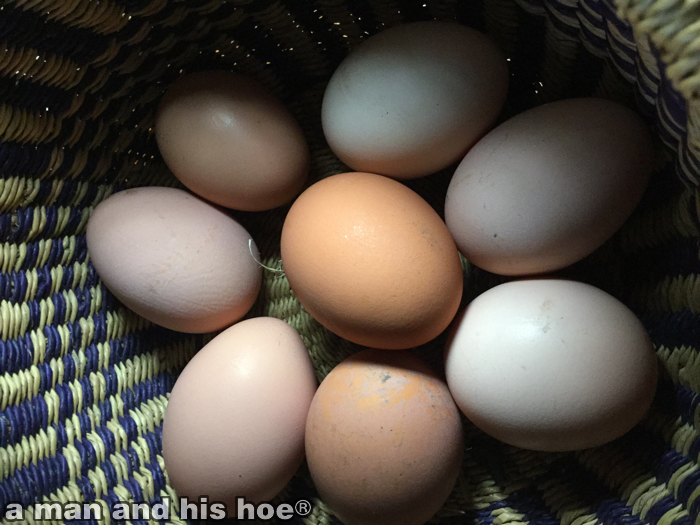
What no one prepared me for was how warm fresh eggs are. The first time I picked up a just laid egg, what charmed me most was how warm it was. The internal temperature of a hen is between 105º and 113ºF (41º to 45ºC). Compared to a human’s body temperature, it’s like a steam bath. Eggs come out steaming. You can see the moistness steam off them before the hen sits back down, and in seconds, they are dry to the touch. Hens sit while they wait for their eggs to roll out of them. But just before they lay them, they stand up, close their eyes, take some deep breaths, and push the eggs out of their cloaca. Is it painful? I don’t know. There is some visible stress, but it is nothing like twelve hours or more of hard labor. The warm egg falls into the nest and dries by the time the hen sits down.
When I go collect eggs, I’ll frequently find a nest with four or five fresh eggs, with the last hen having left the nest just moments ago. Having been kept warm with hen after hen sitting on the same nest, when I reach for the eggs, the whole nest is toasty, with the last egg the warmest of all.
This is just between you and me, but one of the most delicious things in the whole world is a super fresh, still warm, raw egg. The warm, buttery yolk of such an egg has so much flavor. They are good alone, or one top of hot rice with a few drops of soy sauce.
-
Common Things Can Be Amazing

In late fall, the Isabella Tiger Moth (Pyrrharctia isabella) caterpillars, called Woolly Bears, are crawling over everything. There are thousands of them just here. Yesterday, I noticed one crawling about already. I never knew how amazing these caterpillars were until today.
These are northern climate moths. When their caterpillars emerge in the fall, they freeze solid in the winter. In the spring they thaw out and pupate. However, up in the arctic, where summers are so short, they can’t eat enough in one short season to develop to the state of turning into a moth. So they freeze the next winter, eat some more the next summer, and the cycle continues over many years. They’ve been known to live through 14 winters, until finally, they have eaten and grown enough over the short summers to turn into moths.
Imagine freezing solid and thawing out every winter and spring for 14 years. I know of parents who would love to have children they could freeze over and over again.
Close to home, the name of the nearby town of Sedro-Woolley is believed to have come from the Woolley Bear. The town formed in 1898 when the two neighboring towns of Sedro and Woolley Bug merged. Legend has it that the old town of Woolley Bug was named so because of all the Woolley Bears that were crawling around there. The town of Sedro got it’s name from the Spanish word for cedar, “cedro”. The man who named Sedro, Mortimer Cook, changed the c in cedro to s to make the name unique.